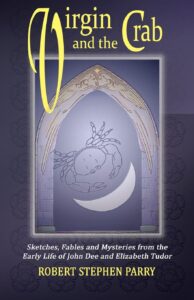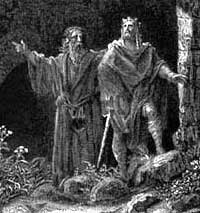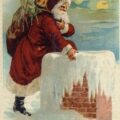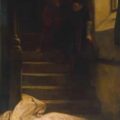
VIRGIN AND THE CRAB : An author’s ramblings on having his novel reviewed on the AnneBoleyn Files Tudor Book Reviews site by Robert Parry
Many theories have been expounded by many eminent and clever people about how mythologies begin. Take Greek mythology, for example – that amazingly rich, fascinating, and at times passionately intense collection of stories about wildly fornicating and vengeful gods and goddesses.
Where did it all come from? Where did we get our magnificent Zeus and our mysterious Selene, our handsome Adonis and our sensuous Aphrodite?
Some say it probably all began with a number of prominent, aristocratic families whose deeds were told over generations of time and which became exaggerated and distorted. The aristocrats became Gods and Goddesses and all their various capers became the stuff of ever-more improbable legend, told over and over again by the poets and story tellers of antiquity.
Sounds plausible to me. And if so, then what we are gradually witnessing right now in our own times is the birth of a whole new mythology, and one moreover that is all our own – a mythology of old Albion, of the Anglo-Saxon nations and its heroes – and yes, even its aristocracy, too. It has its origins in the stories of the Arthurian knights, the search for the Holy Grail. A little later, come the plays of Shakespeare, and then later still all those great painters and poets of the 18th and 19th centuries – of Waterhouse, Millais and Burne Jones; of Tennyson, Morris and William Blake. From all these sources we have a brand new mythology emerging – populated by beautiful troubled maidens, eager heroes and dastardly villains; replete with sprites, with fairies, wizards and all kinds of mythical beasts.
To be sure, this is a mythology based on some genuine facts, but also usually quite a lot of fantasy, too. It has proliferated into our own times with the myriad stories and movies about the Tudors and Elizabethans: Henry VIII, Anne Boleyn, Elizabeth and all her wonderful and extravagant men about court – they are already entering the realm of legend; beautified in the making, idealised, larger than life.

The historians and the academics might protest, but the mythology continues to grow apace. Facts and figures become lost, submerged into a gorgeous, dream-like fantasy of how the past might have been. The angry, vengeful Zeus, has now become Henry VIII. The mantel of the chaste Virgin, Selene, has now been taken up by Elizabeth. In the new mythology we have our archetypal ‘sacrificial maiden’ – Jane Grey; we have our brave hero: Henry at Agincourt: ‘once more unto the breach!’ We have our queen and mistress Guinevere and our noble lady wronged, Anne Boleyn. We have our magicians, like Merlin, and our adventurers, too: from the Arthurian knights searching for the Grail to Walter Raleigh upon his voyages of discovery. We have alchemists and astrologers – and even those whose quest for angels took them to the distant castles of Poland and Bohemia! The richness of our new mythology could be seen to dwarf anything that has gone before.
Thank you Claire for reviewing my story today on your site! I hear that you have been troubled with accusations of ‘feminising history.’ I would not be overly concerned by that. Take it as a compliment. It is through the feminine that we discover the hidden treasures of the intuitive mind, not just the rational intellect of facts and figures. It is through the feminine that we can reach back to the past and to the ‘story teller’ in us all. That is how mythologies and legends are made. And wouldn’t life be dull without these!
The Virgin and the Crab, my novel, is a very young piece of mythology. On the scale of things it is hardly out of nappies yet. It is just one more little line or two in the epic saga of Old Albion, a tribute to the legacy of the Green Man of Springtime, to the magic of a Merlin that came again to the court of Elizabeth not too long ago in the shape of the amazing John Dee. Through his story, I hope perhaps to have gone some way towards placing this most fascinating of Englishmen where he rightly belongs: deep in the legend but also always high in our estimation of what is possible in a man, or anyone who has a dream and strives to make it visible.

